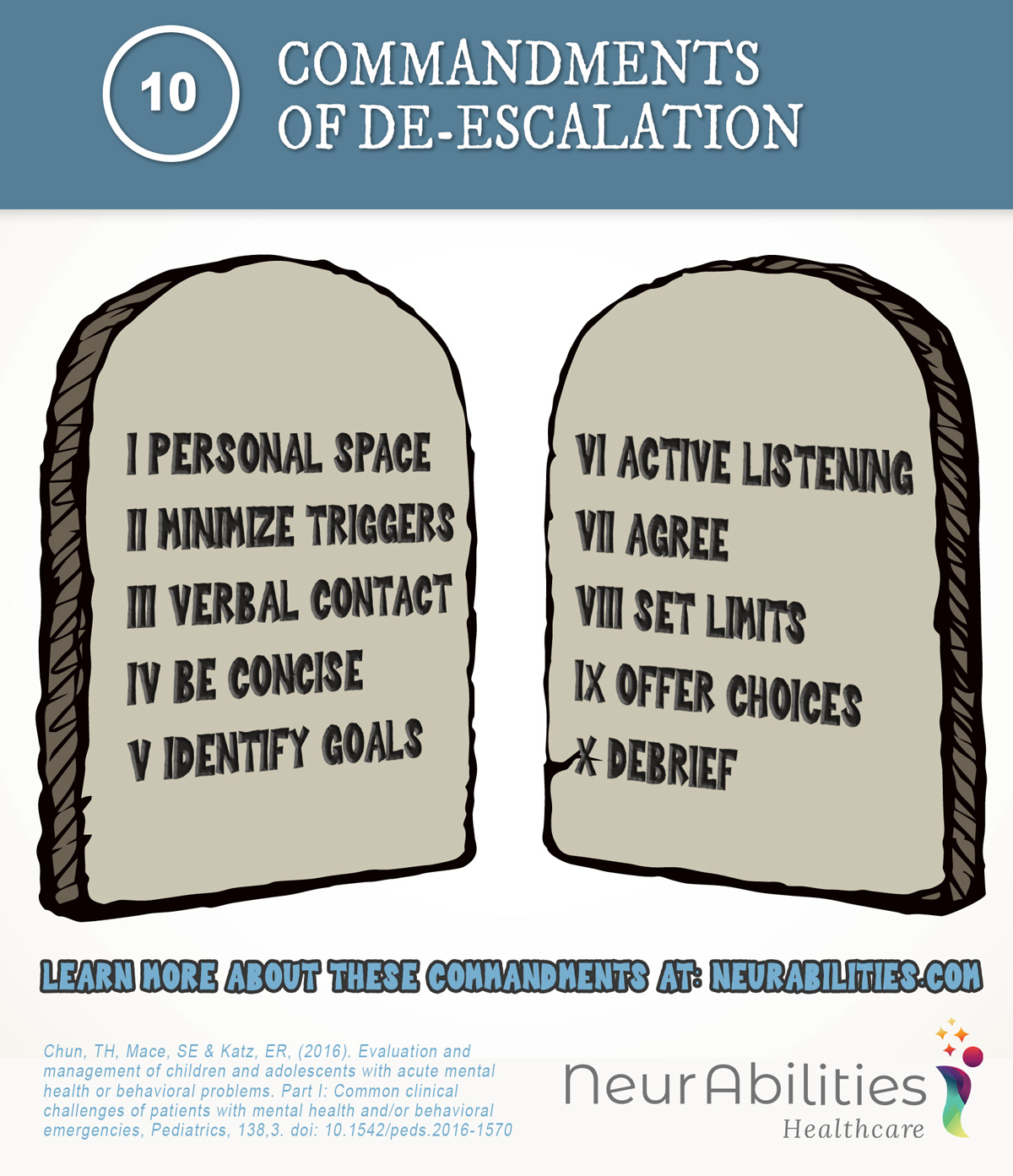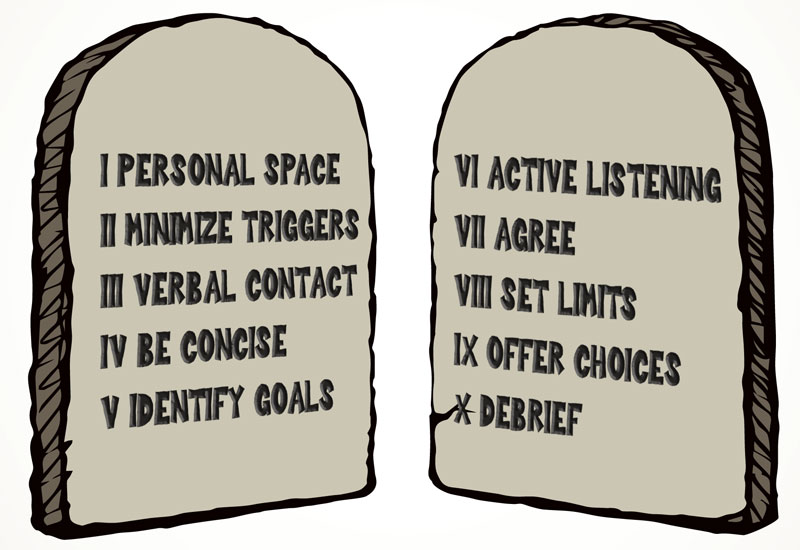
I Personal Space
– Two arms-length from patient
– Unobstructed path from room
II Minimize Triggers
– Stay calm
– “Open” body language
– Body positioning
III Verbal Contact
– Identify lead communicator
– Introduce yourself
– Provide reassuring statements
IV Be Concise
– Use simple language
– Repeat message
– Set limits, offer choices and alternatives
– Allow time to process
V Identify Goals
– Wants/feelings
VI Active Listening
– “What I’m hearing you say is…”
VII Agree
– Build empathy
– Don’t argue
VIII Set Limits
– Be reasonable and respectful
– Clear expectation, choices and consequences
IX Offer Choices
– Offer acts of kindness (food or drink)
– Identify choices/alternatives to escalation for patient
X Debrief
– Discuss events with staff or others
– Allow the patient to describe what happened in their own words
What if the patient is non-verbal?
– Proactively identify lead and mode of communication
– Use visuals, communication device (i.e. iPad) etc.








